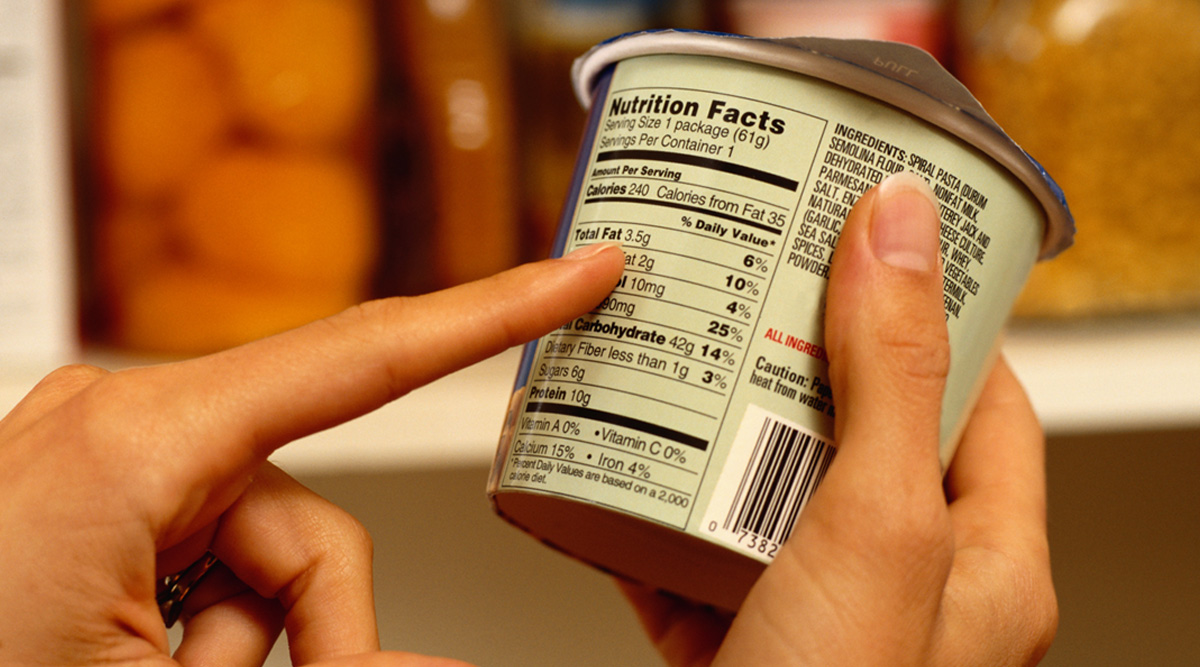The Missing Ingredient in FDA's Proposed Rule
DIALOGUE

May 2023
Volume 77, No. 4

“Eat whatever you like, as long as you manage portion size and frequency.” That’s how I counseled my clients at the Manhattan fitness club where I started out doing nutrition counseling almost 25 years ago.
As a dietitian, my clients have included a wide variety of people—from New York financial service professionals to Medicaid recipients. Audiences can and do change, but my focus on healthy eating has remained the same: Each food decision is only one part of the whole day.
About five years ago, I started working in recipe analysis. I have now run nutrition stats on thousands of recipes—for institutional foodservice and a large grocery retailer, as well as for over a dozen cookbooks. When I was counseling one-on-one, I helped clients make healthy choices within a framework that fit their culture, traditions, preferences, means, and nutrient concerns. I had the luxury of adapting “healthy” to fit an individual.
Things changed when I started working with publishers and institutions. Now I was correcting recipes and adapting marketing messages to fit the rules for healthy eating.
Which is where last fall’s U.S. Food and Drug Administration (FDA) update on the use of the word healthy on food product labels comes in. The stated goal of the 2022 proposed update is to better align the claim to the current Dietary Guidelines. I was excited to see what the FDA proposed, so I rolled up my sleeves and eagerly consumed all 40,000 words, as well as the comments submitted over the next five months.
Most responses were predictable: Business and special interest groups mostly congratulated the FDA. A few independent voices suggested the FDA consider degree of processing and the NOVA food classification system. The Academy of Nutrition and Dietetics restated its 2017 criticism regarding use of the term healthy on individual food products and its position favoring a total diet approach.
Nothing surprised me. Then, on the final day, a lengthy document was submitted by a consortium of CPG manufacturers. That comment was the first to mention the word “palatability” in the context of consumer acceptance. This got my attention.
Palatability was never an issue when I worked with clients because over the course of a day, we could always find a way to balance an indulgence. Working with publishers and institutional foodservice made me aware palatability might be an issue. I remembered those restaurant meals a decade ago promising healthy, but lacking flavor, and the buzz that labeling a menu item healthy was the kiss of death.
To my surprise, I learned recipes listed on the U.S. Department of Agriculture’s own website, MyPlate Kitchen, might not qualify as healthy. I signed into MyPlate Kitchen and did find recipes that would exceed the thresholds set out by the proposed FDA update for sodium, saturated fat, and added sugars.
By now, I was downright uncomfortable. How was it possible that “Big Food” submitted the only comment to acknowledge that food should taste good? Strange bedfellows, indeed.
Since the comments closed, I have gone back and run nutrition stats on my own recipes. Although I favor fresh, seasonal ingredients, and use salt, sugar, and fat in moderation, many of my recipes don’t fare any better than the recipes on MyPlate.
Palatability is a word most dietitians don’t use because our training does not include sensory science. Dietitians learn that a healthy eating pattern includes nutrient-dense foods from all five food groups and low levels of saturated fat, sodium, and added sugar.
Palatability is a word the FDA also does not use. The word does not appear a single time in the 40,000-word proposed update. As both an accomplished home cook and a dietitian, I have a problem with this. Consumers won’t eat food that doesn’t taste good. The degree of restriction required for compliance is a little too austere even for my palate.
Simply put, the proposed FDA update will likely fail to improve anyone’s health while potentially having some unintended consequences. The intention was to encourage people to make healthier choices. But in reality, it runs the risk of alienating them. That serves no one’s interest.
The opinions expressed in Dialogue are those of the author.
Omnivore Podcast
The long-awaited update to FDA’s healthy food label guidelines was unveiled last fall. But dietitian and recipe analyst Linn Steward says the new rules overlook palatability, which could hinder their effectiveness with consumers.
Digital Exclusives

10 Food Trend Predictions for 2022
The editors at Food Technology magazine, published by the Institute of Food Technologists (IFT), have announced their predictions for the hottest food trends for 2022.
Food Technology Articles

How to Achieve EPR-Forward Packaging
In this two-part series, the author explores the history of Extended Producer Responsibility (EPR), what is needed to help EPR succeed, and how brands can best prepare for EPR.

How to Formulate for Food Intolerances
In this column, the author describes the global prevalence of food intolerances and provides insight into state-of-science ingredient replacement and removal methods when formulating gluten-free and lactose-free foods.

Top 10 Functional Food Trends: Reinventing Wellness
Consumer health challenges, mounting interest in food as medicine, and the blurring line between foods and supplements will spawn functional food and beverage opportunities.

Production Capacity Expands for Food to Fight Malnutrition
Production capacity for ready-to-use therapeutic food Plumpy’Nut at Edesia expands thanks to a Bezos family donation.

Natural Product Expo West Attention-Getters: Highlights From the Event
Food Technology Contributing Editor Linda Milo Ohr reports on trends she tracked at Natural Products Expo West 2024.
Recent Brain Food

A New Day at the FDA
IFT weighs in on the agency’s future in the wake of the Reagan-Udall Report and FDA Commissioner Califf’s response.
Members Say IFT Offers Everything You Need to Prepare for an Uncertain Future
Learn how IFT boosts connections, efficiencies, and inspiration for its members.

More on the FDA's Food Traceability Final Rule
In a new white paper, our experts examine the FDA’s Food Traceability Final Rule implications—and its novel concepts first proposed by IFT.
Job Satisfaction in the Science of Food is High but Hindered by Pain Points
IFT’s 2022 Compensation and Career Path Report breaks it down.


